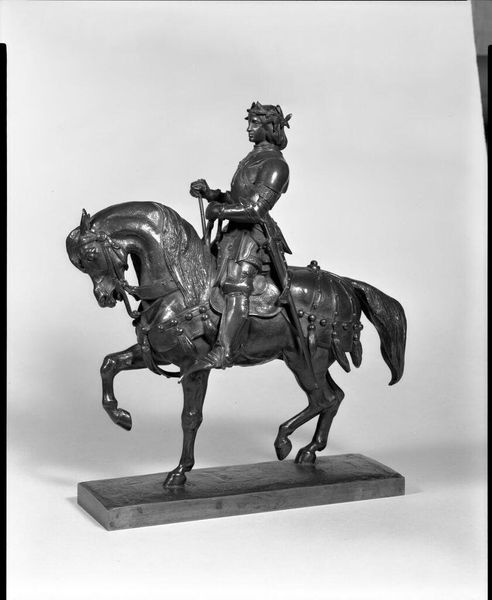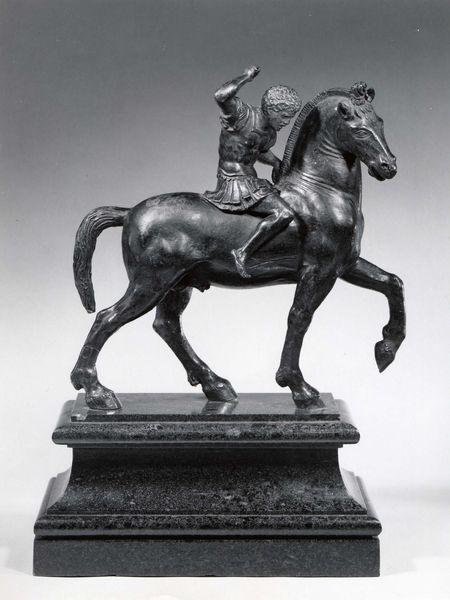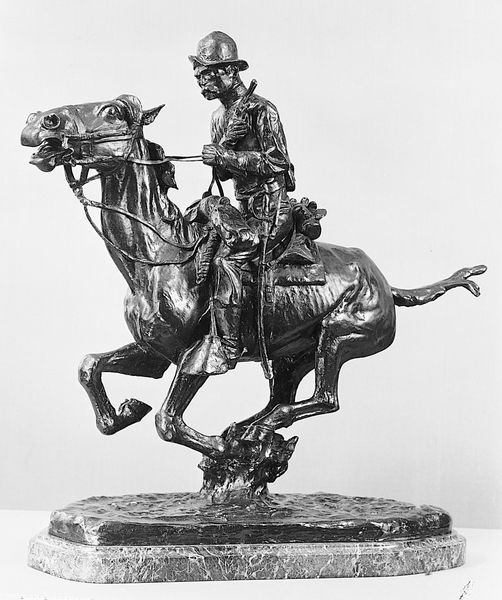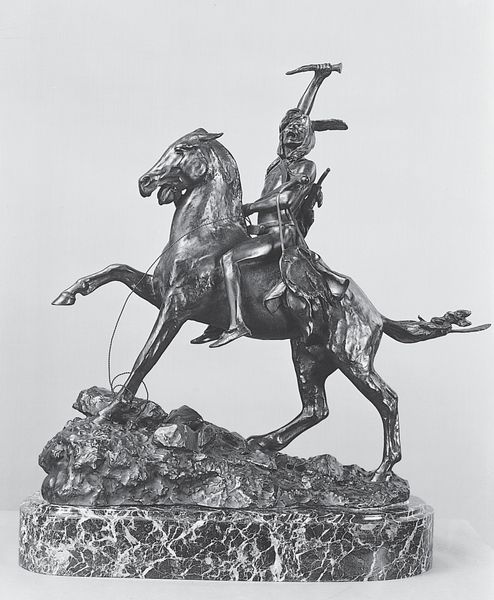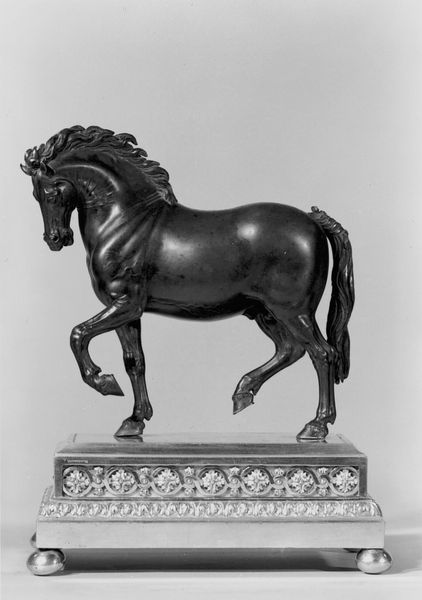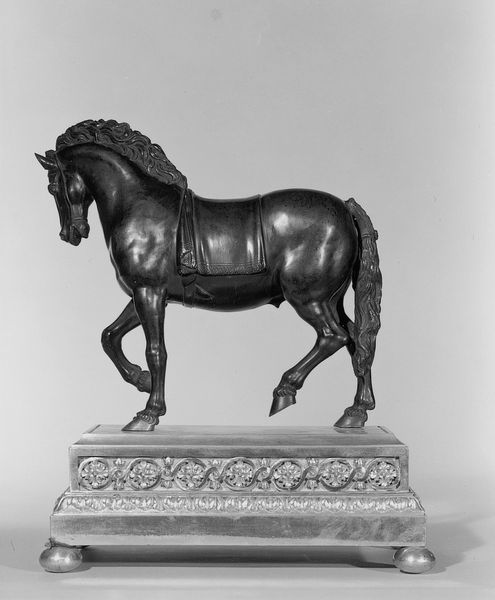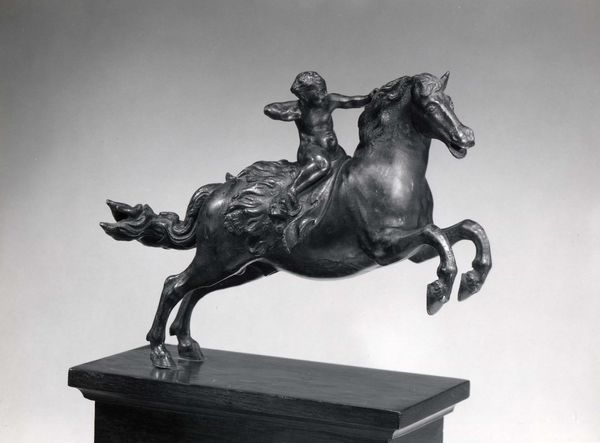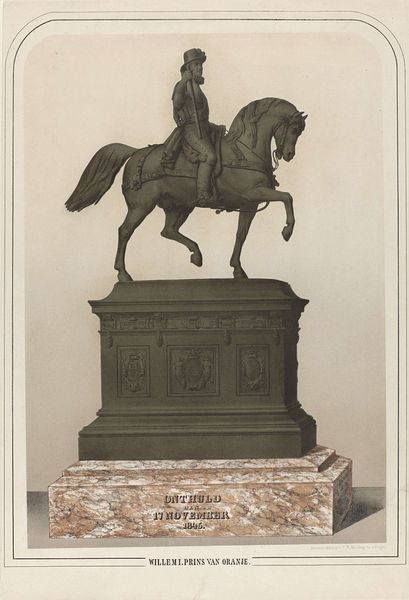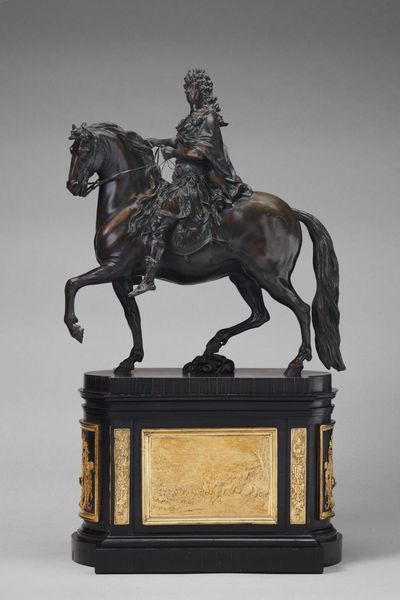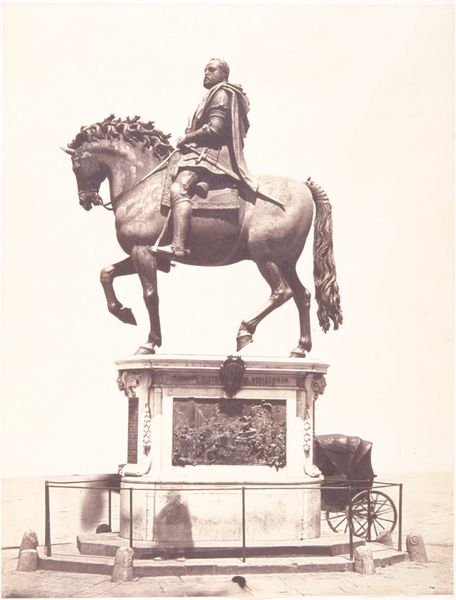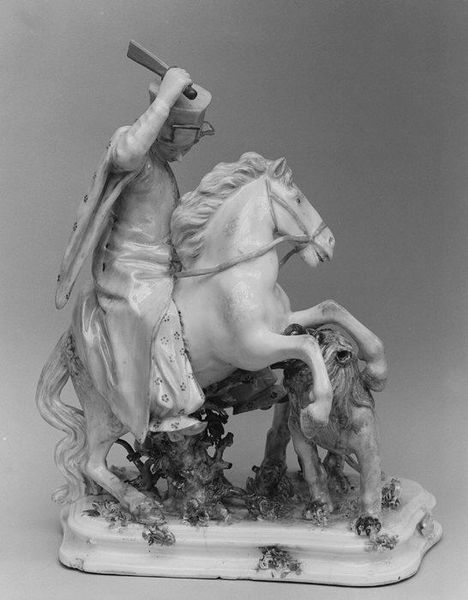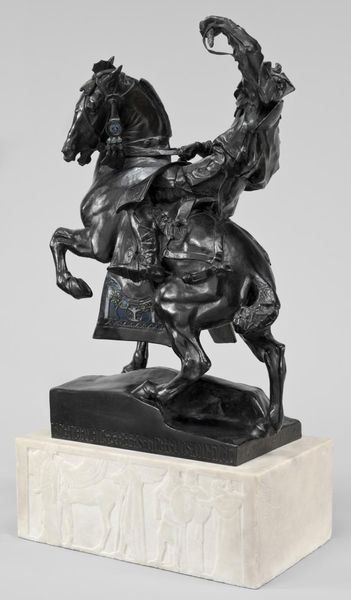
bronze, sculpture
#
allegory
#
baroque
#
sculpture
#
bronze
#
figuration
#
sculpture
#
decorative-art
Dimensions: Height: 24 5/16 in. (61.8 cm)
Copyright: Public Domain
Editor: Here we have "Fame," a bronze sculpture crafted between 1700 and 1715 by Antoine Coysevox. I find the dynamism striking, this winged figure atop a rearing horse… What do you make of it? Curator: This image of Fame, eternally proclaiming from her trumpet, embodies a fascinating desire to secure lasting recognition. What feelings does the rearing horse evoke within you? Editor: Exuberance, definitely. Impatience almost, like it’s bursting to announce something important. It does feel symbolic. Curator: Precisely! The rearing posture speaks of power, aspiration – but consider the potential subtext. Coysevox likely intended this sculpture to capture Louis XIV’s achievements. Does knowing that alter your reading of the figure, the image? Editor: It does, actually. There’s an element of propaganda there, maybe even hubris? Were sculptures like this common? Curator: Royal patronage throughout Europe employed allegory extensively. Visual symbols offered a direct line to cultural memory. Trumpets signified authority, winged steeds divine blessing – connecting rulers to both earthly and celestial realms. Editor: I never considered how carefully those symbols would be curated. It’s more complex than I originally thought. Curator: It's fascinating to see how power utilized and shaped symbols for centuries to influence memory and cultural narratives. Next time you encounter similar imagery, try considering what those symbolic figures meant to their original viewers and how that meaning may have shifted today. Editor: That's a perspective shift I'm definitely going to keep in mind!
Comments
No comments
Be the first to comment and join the conversation on the ultimate creative platform.

